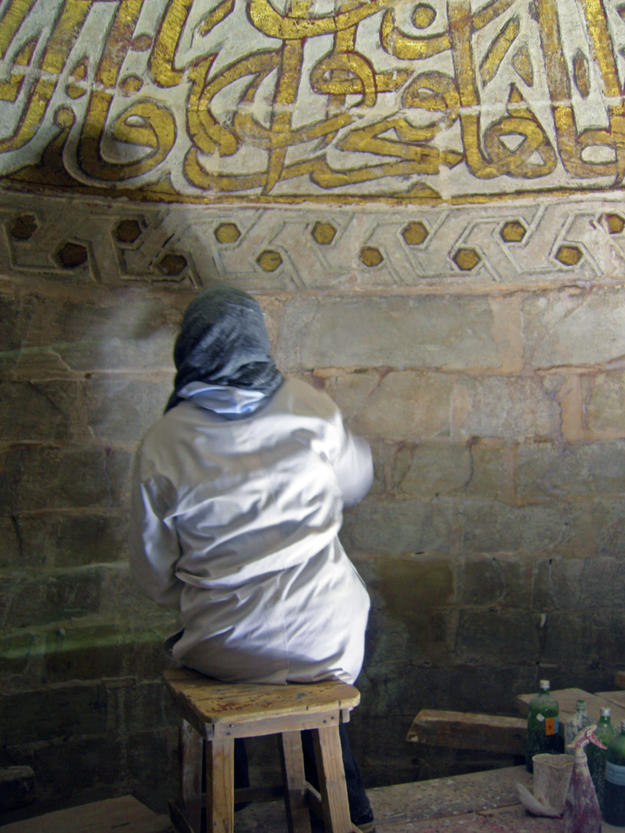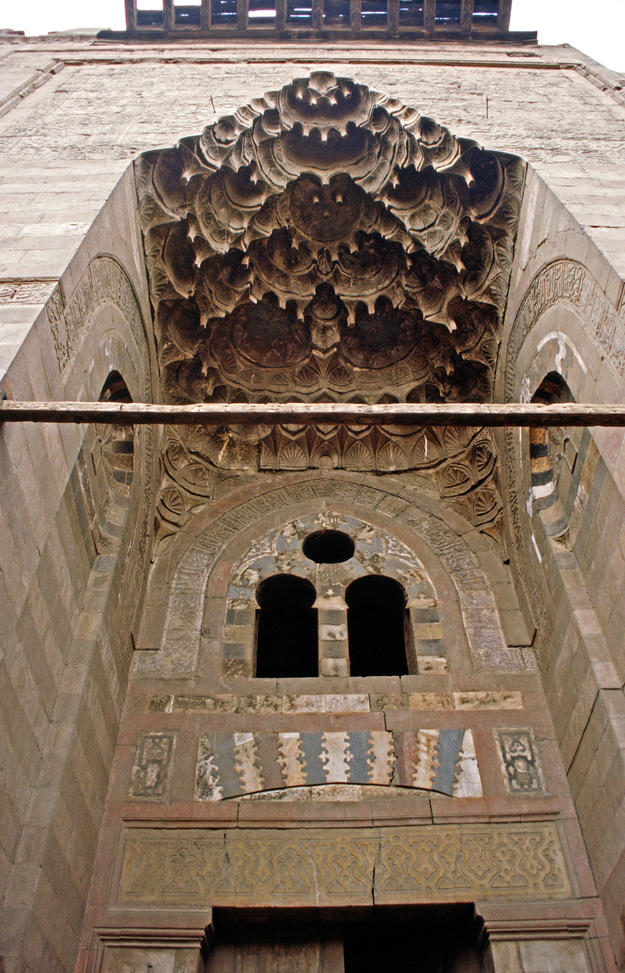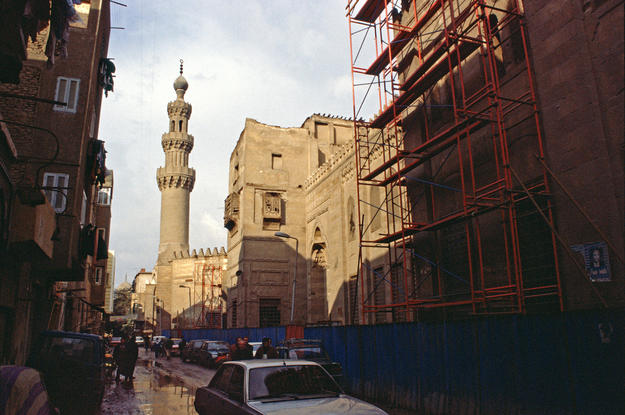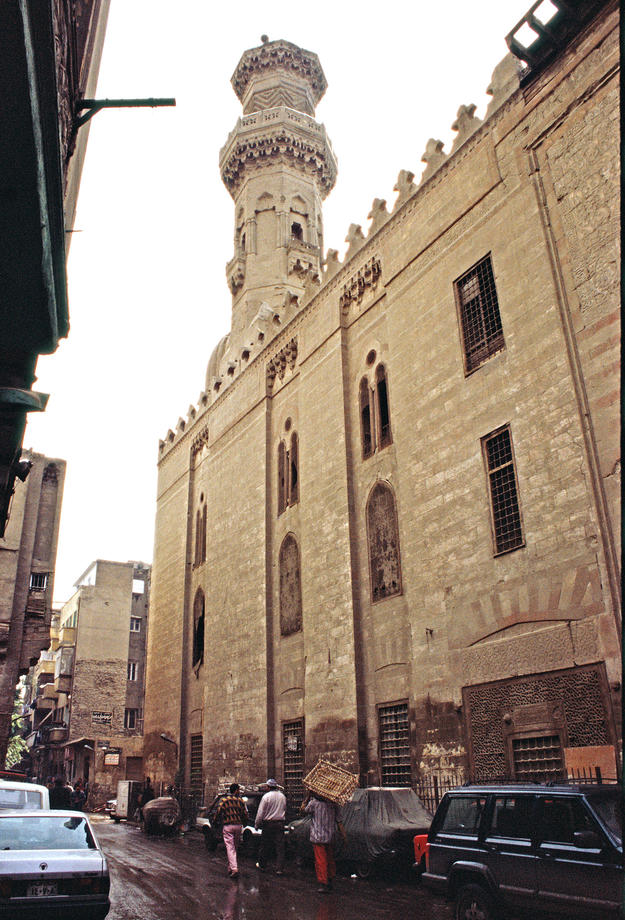Al-Darb Al-Ahmar District Mosques
Cairo’s Al-Darb al-Ahmar district is a catalog of over 700 years of history. It is rich with medieval Islamic architecture, including the towering minarets of Khayrbek and Um al-Sultan Shaaban mosques, visible above the city skyline. In the dense encroaching environment of one of Africa’s largest cities, Al-Darb al-Ahmar was threatened with demolition. However in 1998 the Aga Khan Trust for Culture (AKTC) signed an agreement with the Egyptian Supreme Council of Antiquities to revitalize the district and protect it from insensitive development. World Monuments Fund partnered with the AKTC in this initiative, focusing on Um al-Sultan Shaaban Mosque, built in 1369, and the Khayrbek Complex, a group of seven structures including mausoleums, palaces, and mosques from the Mamluk and Ottoman periods.
Successful restoration of mosques and their minarets
In 2000, the AKTC and WMF created a comprehensive conservation plan and a pilot project within the larger effort to preserve and invigorate the historically rich Al-Darb al-Ahmar district. Emergency stabilization was needed for the Um al-Sultan Shaaban mosque’s scalloped dome and minaret which had never been fortified after a partial collapse in an earthquake in 1884, and salt damage had caused cracks in the complex. The first stage of conservation consisted of immediate structural repairs, complete analysis and extensive documentation of the project’s eight structures. The second phase saw the successful restoration of the lower portions of the mosques and their minarets. The final stage, carried out from 2003 to 2004, completed work on the upper portions and decorative detail of the two sites.
The Sultan mosque, built for the mother of Mamluk Sultan Khawand Baraka in 1369, is one of the few monuments commissioned for women in Cairo, adding to its importance.
The city as a whole derives benefit from the revitalization of one of its historic districts. Preservation is a means toward progress. The success of this pilot project helped advocates further the case for the preservation of lesser-known historic sites in the area.




